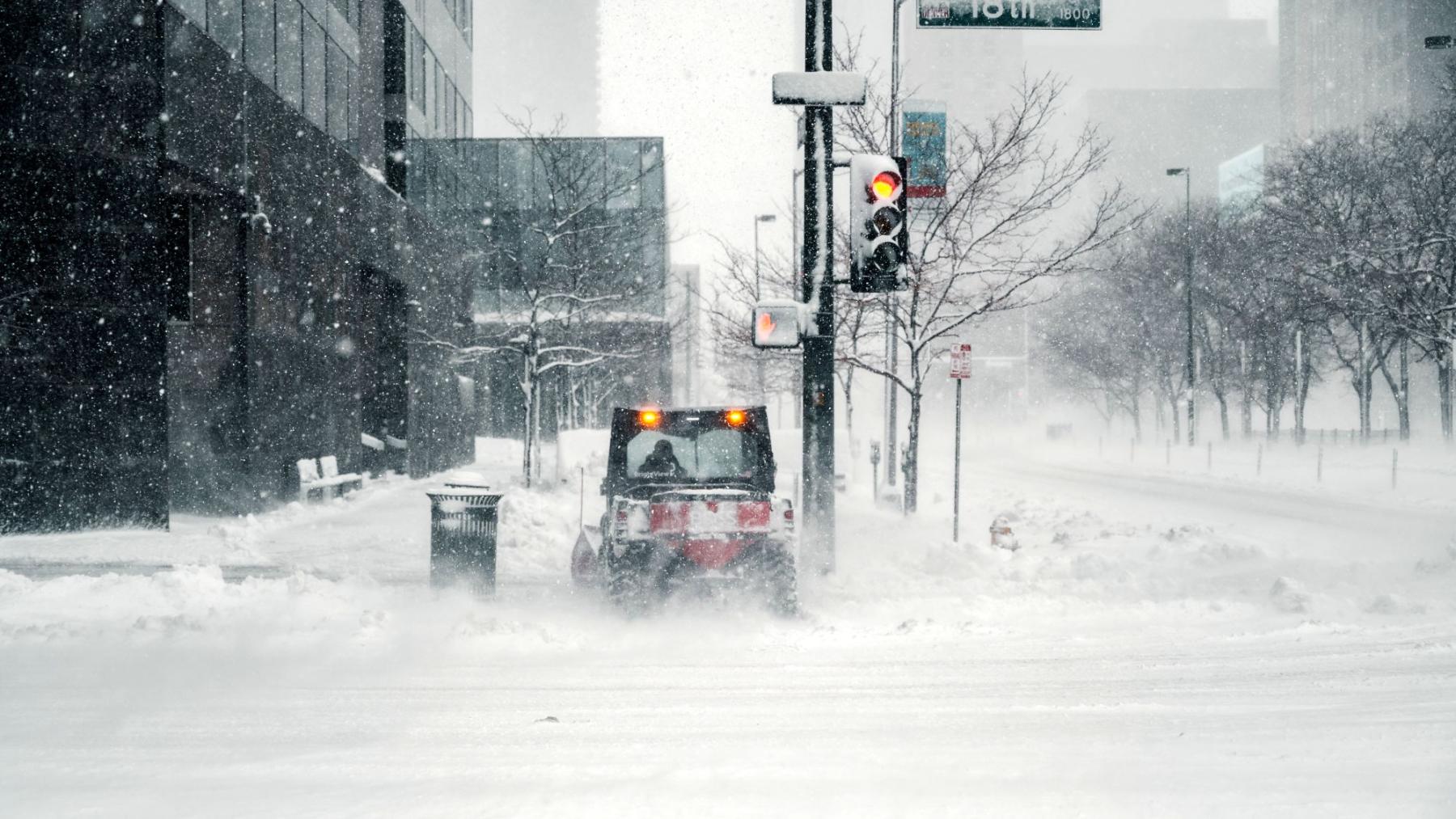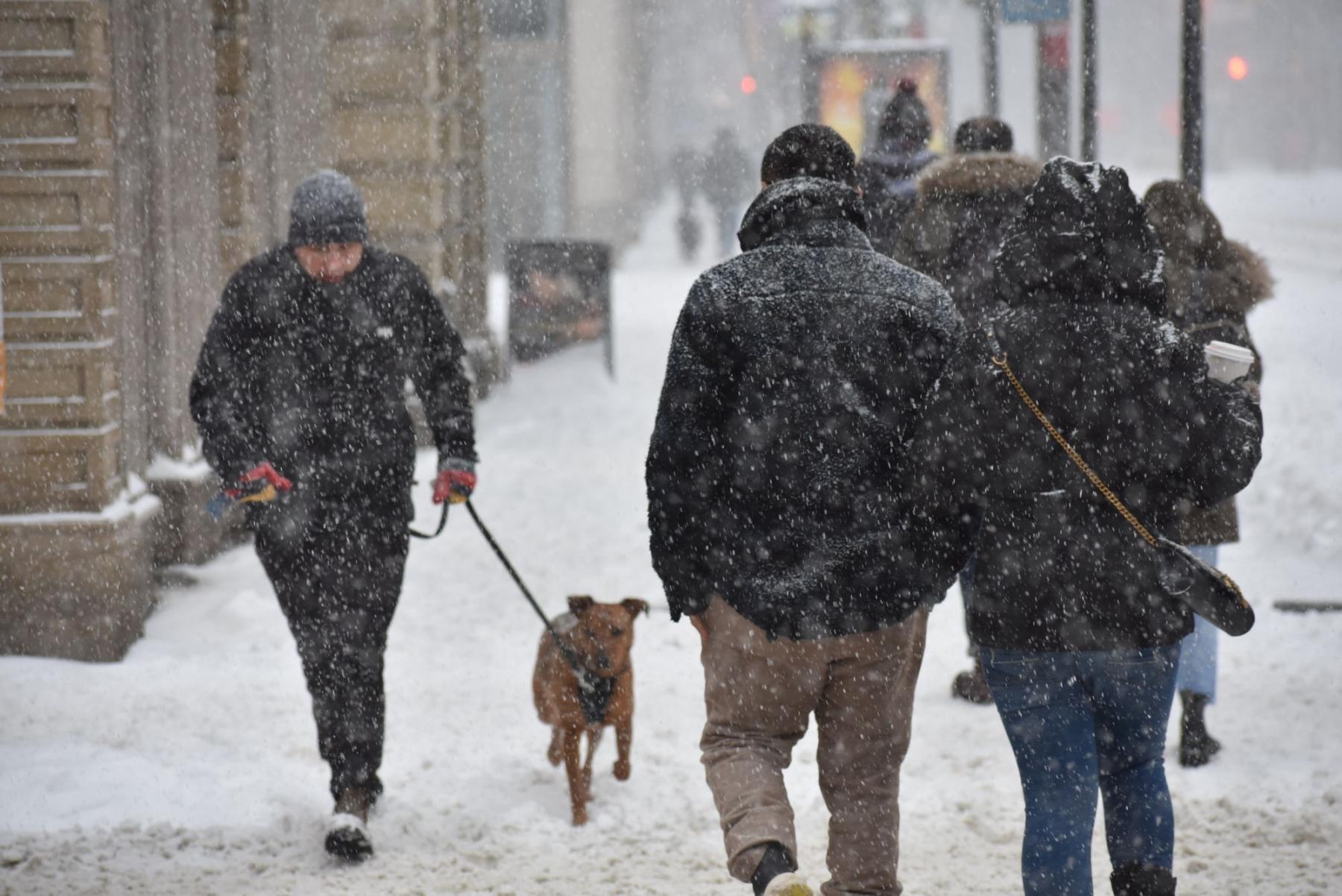
The main types of weather warnings and how to read them
It is better to be aware about various harsh weather phenomena before they happen so that you can prepare for them and overcome them safely. For this purpose, there are various meteorological warnings, which you can subscribe to just like some travel blogger's YouTube channel (it will be more useful). In this article, we will understand what are weather warnings and how to read them, as well as how to install such alerts on your phone.
What are the weather warnings?
Weather warnings are various kinds of messages sent by official national weather services around the world in the form of written messages on the Internet, radio broadcasts, and various graphic elements — photographs, interactive weather maps, and the like. All of these relate to so-called “weather safety,” one of the branches of meteorology as weather forecasting, weather history, and others.
According to the US National Oceanic and Atmospheric Administration (NOAA), such phenomena and their consequences include air quality, beach hazards, cold, droughts, floods, fog, heat, hurricanes, lightning, rip currents, space weather, sun (ultraviolet radiation), thunderstorms, tornado, tsunamis, wildfire, wind, and various winter weather phenomena such as snowfalls and avalanches, ice thickness at water bodies, etc. NOAA and other services regularly warn the public about all of this.
The purpose of reporting on forecasted severe weather events is to inform about them, help to prepare for them and avoid them, as well as to overcome them with the least amount of damage as in case of events that have already occurred or cannot be avoided, such as major events like tropical cyclones.

Colin Lloyd / Unsplash
How to read weather warnings of different types?
Given the dozens of types of extreme weather, there are about as many warnings about it or even more. They also vary greatly from service to service. But they can all be divided into three main types, from less to more important: advisories, watches, and, actually, warnings.
Each of these types also immediately contains a brief instruction to act, consisting of just one word: be aware or prepared and take action.
They are also usually indicated by the colors: yellow, orange, and red, depending on the degree of danger.
Message types (headings), instructions, and colors help you to immediately read the information in case you have little time to read the whole text, even if it is a small message as in a push notification, listen to the whole recording, or even look at a detailed picture or map.
So let’s see briefly what they mean:
Weather advisories (yellow): be aware
Weather advisories are "less important" warnings that describe weather phenomena that are no longer comfortable for humans (and vital infrastructure), but are generally not considered life-threatening either — for example, cold, freezing weather or heavy rains that occur quite often. Accordingly, you should “just” be aware of such events and take them into account. Say, going hiking in heavy rain is not a good idea. The rain itself is not dangerous, but it can lead to life-threatening conditions — a landslide, river overflow, and so on.
NOAA's example: "Wind Chill Advisory: Be Aware. Seasonably cold wind chill values (but not extremely cold) are expected or occurring. Be sure you and your loved ones dress appropriately and cover exposed skin when venturing outdoors."
Weather watches (orange): be prepared
Weather watches are more important warnings that describe phenomena that can develop into severe and even extreme weather over time. However, at the time watches are published, meteorologists themselves usually do not yet know exactly when this will occur. For example, thunderstorms are usually warned six hours before, and heavy snowfalls 12 hours or even a day in advance. In other words, weather watches are an intermediate type of warning between the previous one and the next one. They also cannot be ignored and, as the name implies, you must be prepared for events they are telling you about. Say, in case of a heavy snowstorm, not only don't go hiking, but you should also hide in a shelter and check its stability.
NOAA's example: "Wind Chill Watch: Be Prepared. Dangerously cold wind chill values are possible. Adjust your plans to avoid being outside during the coldest parts of the day. Make sure your car has at least half a tank of gas, and update your winter survival kit.
Weather warnings (red): take action
Weather warnings are the most important warnings that tell you that extreme weather is imminent or has already occurred. The timing of such messages either matches the previous one (6 hours to 24 hours) or is even closer to them. In particular, thunderstorms, tornadoes, and various storms are very difficult to predict, so warnings about them are usually sent with a maximum time margin of only a few hours. Unlike the previous two types of warnings, this one is also a call for specific action to overcome harsh weather. For example, in the case of hurricanes, you need to move to the basement and use a so-called "emergency kit" — a supply of drinking water, food, medicines, a battery, and so on — everything to wait out the bad weather and the first time after it.
NOAA's example: "Wind Chill Warning: Take Action. Dangerously cold wind chill values are expected or occurring. Avoid going outside during the coldest parts of the day. If you do go outside, dress in layers, cover exposed skin and make sure at least one other person knows your whereabouts. Update them when you arrive safely at your destination."

Ken Whytock / Unsplash
Where to get weather warnings and alerts for outdoor activities?
You can find weather warnings and alerts on the official sites of national weather services around the world. As a rule, every site has a special section of the same name, "Warnings" or "Alerts", or they are placed directly on the home/start page. Here's a list of major ones in all parts of the world:
- Canada: Weather.gc.ca/mainmenu/alert
- United States: Weather.gov/alerts
- Mexico: Smn.conagua.gob.mx/es/pronosticos/avisos
- Costa Rica: Imn.ac.cr/en/avisos-meteorologicos
- Panama: Hidromet.com.pa/es/avisos
- Brazil: Alertas2.inmet.gov.br
- Argentina: Smn.gob.ar/alertas
- Chile: Meteochile.gob.cl
- United Kingdom: Metoffice.gov.uk/weather/warnings-and-advice
- France: Vigilance.meteofrance.fr/fr
- Sweden: https://www.Smhi.se/en/weather/warnings-and-advisories
- Finland: En.ilmatieteenlaitos.fi/warnings
- Turkey: Mgm.gov.tr/eng/radar
- Morocco: Marocmeteo.ma/fr/carte-de-vigilance-générale
- South Africa: Weathersa.co.za/home/warnings
- Kazakhstan: Kazhydromet.kz/en/meteoalert
- Japan: Data.jma.go.jp/multi/warn
- Thailand: Tmd.go.th/en/list_warning
- India: Mausam.imd.gov.in
- Australia: Bom.gov.au/australia/warnings
- New Zealand: Metservice.com/warnings
- Fiji: Met.gov.fj/current_warnings
However, the fastest modern way to receive warnings about seasonal, severe, and extreme weather is through notifications on your smartphone from an installed weather app of your choice. This can be either an app from one of the official weather services or from companies that use the former as a source of weather information, including apps for various outdoor activities.
For example, in the Windy.app for wind, water, and winter sports, you can set wind alerts to be notified of strong winds to avoid them or to use them for your sport, which is impossible to practice without it as in the case of kitesurfing and yachting.
To activate the wind alerts, on the Spot screen, click on the bell icon under the spot’s name. Then select the parameters you need: wind direction and speed, time interval, and others. The notification will come on the Lock Screen of your phone when the weather conditions are reached.
Read the full instructions on how to use wind alerts in the app, as well as other articles about this weather phenomenon in the large collection about it.
Wind alerts in the Windy.app for iOS
Wind alerts in the Windy.app for iOS
Text: Ivan Kuznetsov
Cover photo: Colin Lloyd / Unsplash
You will also find useful
The collection of articles for the fall and winter outdoor season
Latest News
Professional Weather App
Get a detailed online 10 day weather forecast, live worldwide wind map and local weather reports from the most accurate weather models.
Compare spot conditions, ask locals in the app chat, discover meteo lessons, and share your experience in our Windy.app Community.
Be sure with Windy.app.



